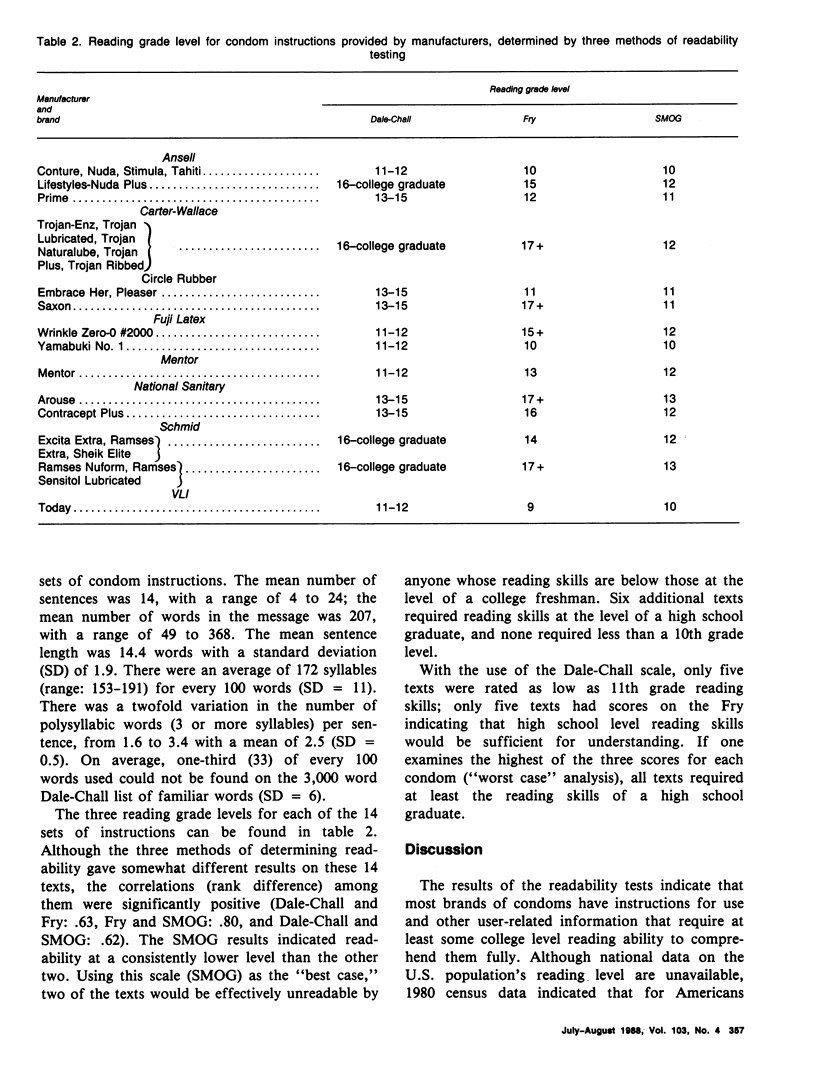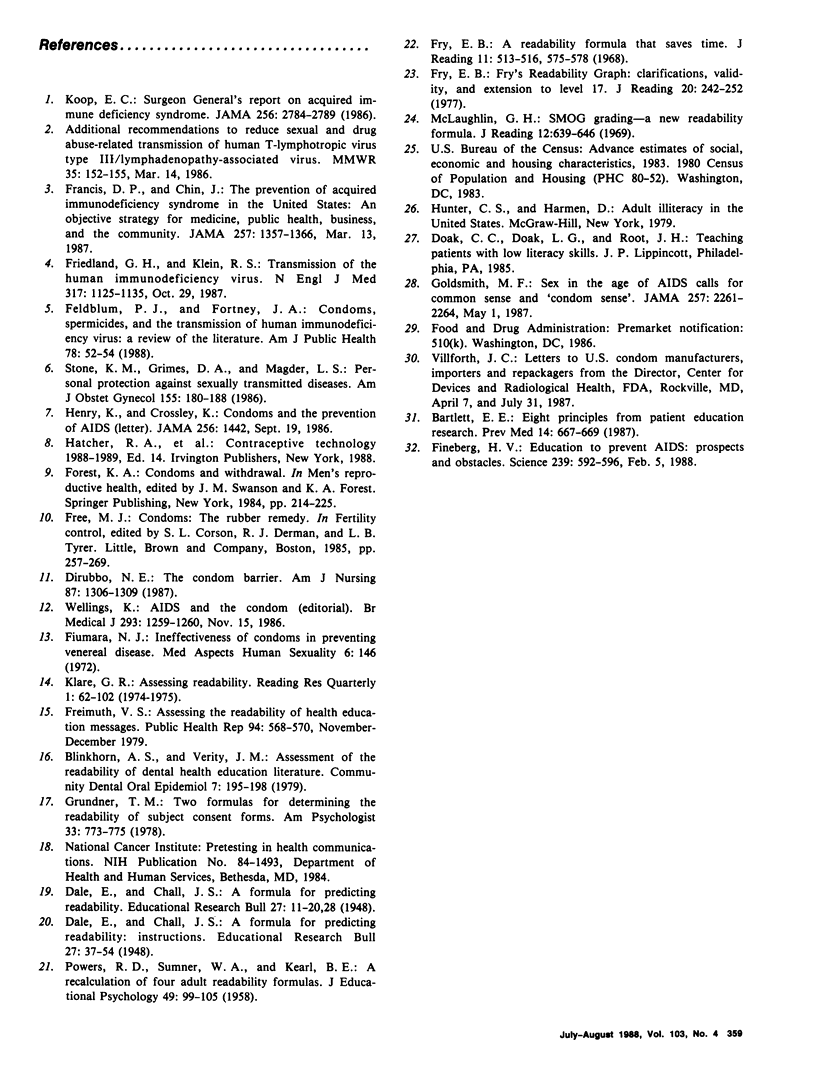Abstract
The use of condoms has assumed a central position in the current strategy to prevent sexual transmission of the human immunodeficiency virus. The effectiveness of condoms in disease prophylaxis is dependent, to a degree, on their correct use. Condom manufacturers routinely include information on condom use either printed on the actual package or in an enclosed package insert. With the use of three readability formulas, the reading grade level was determined for 14 different sets of instructions included with 25 brands of condoms manufactured by 7 domestic and 1 overseas manufacturer. The readability formulas, when applied to instructions for condom use, estimated that, conservatively, 8 of the 14 instructions required at least reading at the level of a high school graduate and none required less than a 10th grade level. Clearly written instructions and simple concepts could assist current and future condom users in the correct use of condoms and improve the effectiveness of condoms in the prevention of AIDS and other sexually transmitted diseases.
Full text
PDF




Selected References
These references are in PubMed. This may not be the complete list of references from this article.
- Blinkhorn A. S., Verity J. M. Assessment of the readability of dental health education literature. Community Dent Oral Epidemiol. 1979 Aug;7(4):195–198. doi: 10.1111/j.1600-0528.1979.tb01215.x. [DOI] [PubMed] [Google Scholar]
- Dirubbo N. E. The condom barrier. Am J Nurs. 1987 Oct;87(10):1306–1309. [PubMed] [Google Scholar]
- Feldblum P. J., Fortney J. A. Condoms, spermicides, and the transmission of human immunodeficiency virus: a review of the literature. Am J Public Health. 1988 Jan;78(1):52–54. doi: 10.2105/ajph.78.1.52. [DOI] [PMC free article] [PubMed] [Google Scholar]
- Fineberg H. V. Education to prevent AIDS: prospects and obstacles. Science. 1988 Feb 5;239(4840):592–596. doi: 10.1126/science.3340845. [DOI] [PubMed] [Google Scholar]
- Francis D. P., Chin J. The prevention of acquired immunodeficiency syndrome in the United States. An objective strategy for medicine, public health, business, and the community. JAMA. 1987 Mar 13;257(10):1357–1366. [PubMed] [Google Scholar]
- Freimuth V. S. Assessing the readability of health education messages. Public Health Rep. 1979 Nov-Dec;94(6):568–570. [PMC free article] [PubMed] [Google Scholar]
- Friedland G. H., Klein R. S. Transmission of the human immunodeficiency virus. N Engl J Med. 1987 Oct 29;317(18):1125–1135. doi: 10.1056/NEJM198710293171806. [DOI] [PubMed] [Google Scholar]
- Goldsmith M. F. Sex in the age of AIDS calls for common sense and 'condom sense'. JAMA. 1987 May 1;257(17):2261-3, 2266. [PubMed] [Google Scholar]
- Koop C. E. Surgeon General's report on acquired immune deficiency syndrome. JAMA. 1986 Nov 28;256(20):2783–2789. [PubMed] [Google Scholar]
- Stone K. M., Grimes D. A., Magder L. S. Personal protection against sexually transmitted diseases. Am J Obstet Gynecol. 1986 Jul;155(1):180–188. doi: 10.1016/0002-9378(86)90108-0. [DOI] [PubMed] [Google Scholar]
- Wellings K. AIDS and the condom. Br Med J (Clin Res Ed) 1986 Nov 15;293(6557):1259–1260. doi: 10.1136/bmj.293.6557.1259. [DOI] [PMC free article] [PubMed] [Google Scholar]


